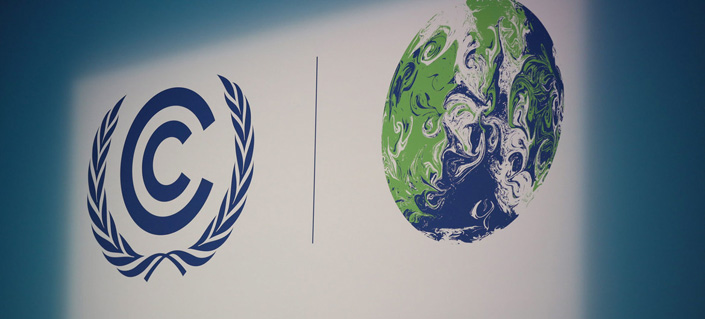
For an NGO observer who has been to 10 of the annual climate COPs (Conference of Parties), following the COP26 Glasgow Conference remotely is a new experience. Close to 30,000 participants were reportedly registered to attend physically or virtually. In the middle of a lasting pandemic and slower-than-expected global economic recovery, this sounds like a surprisingly big crowd. The volume of online blogs and commentaries is also overwhelming compared to the previous COPs in Poland and Spain. Under the rainy grey skies of Glasgow, it seems the tides of enthusiasm to solve climate crisis are high, amid strong winds still tearing continents apart.
Past two years saw significant progress on global climate momentum: “net zero” and “carbon neutrality” announcements from governments lined up, CEOs came up with plans to purchase wind and solar power, and investors built better ESG profiles. Outside of the conference rooms, climate related disasters have been hitting unexpected spots. Rainstorms poured down streets of large cities; bush fires forced families to abandon their suburban estates. Climate change has become more personal to millions more around the world.
It turns out we all share the vulnerability. Maybe that’s why climate talks are regaining media attention.
Climate change might be one of the few issues nowadays that can accommodate wide spectrum of differences. Yet the global politics remains worrying. Power wrestling and unfavorable public sentiment toward some diplomatic issues cast a shadow over the nerves of delegates. Finger pointing at other countries as an excuse to inaction, as usual, can be expected too.
The U.K. — which holds the COP26 presidency — has worked hard with the U.N. to make sure this COP delivers. By branding Glasgow COP26 “the last, best chance to keep 1.5 degree goal alive,” a paramount focus was put on urging countries to commit to more climate actions. The heated spotlight probably makes government delegates sweat, and rightly so. As the annual UN Emission GAP report alerted, countries are not doing enough, especially the industrialized countries, and climate urgency requires all to push the gear to their upper end.
The Paris Agreement managed to strike a delicate balance between a collective longer-term vision of 1.5 degrees pointing toward mid-century and beyond, and the insufficient short-term action pledges. Five years after the agreement, it’s time for countries to build the next level of the Babel Tower of climate action. This is going to be a test to the “ratchet up mechanism” of the deal. China, amongst many other countries, has already announced its plan well ahead, including domestic carbon peak and neutrality goals, and no new investment in coal plants overseas. More pledges are rolling out as leaders address the summit at COP26. How much could these advances add up? Can countries move further ahead?
Phasing out coal will also be a hot topic in Glasgow — a pinpoint with promising outcome the U.K. presidency is pushing under the ambition debate.
Another key topic to watch is to mobilize the money needed to tackle the climate crisis. The finance debate under the United Nations Framework Convention on Climate Change (UNFCCC) has been focused on public funding, from rich countries to those who suffer the most yet contribute the least to climate change. There lies another “gap” — the unmet goal of $100 billion total pledge per year. And there’s not much good excuse for this failure. Some heads of states landed in Scotland with a big check to table. Hopefully good intentions trigger more benevolence acts.
Meanwhile, COP26 will see higher interest in the complimentary means of financing climate action by market mechanism. The rules of a global carbon market will be debated under the Article 6 negotiation. However, my eyes are also on doubts and clarification questions. In the past, NGOs witnessed risks of compromising biodiversity, and/or indigenous communities, when paramount focus was given to calculating carbon stored in a forest for profit. There’s also concern about greenwashing: while actions to reduce emissions at sources must be prioritized in a full and fast manner, some companies might however be incentivized to find loopholes or make vague “net zero” pledges relying on cheap credits and forest-based offsets. With interests converging on the potential opening of a broader interconnected carbon market, a good debate in the next days will be invaluable.
Glasgow is not short of brilliant minds trying to crack the puzzle of incentivizing and channeling of financial flows. In a recent event celebrating the 15 anniversary of his landmark report “The Economics of Climate Change: Stern Review,” Nicolas Stern argued that “climate action requires a trade-off with economic development and growth” is a misconception. This is also probably why an unusual guest, my favorite Science Fiction writer alive, Kim Stanley Robinson, gets invited to attend multiple events at COP26. In his best-selling speculative novel “The Ministry for the Future” with UN Climate COPs in the 2030~40s as key stages of the story, he proposed to create “Carbon Coin” — a new international currency reflecting the true value of carbon reduction appreciating alongst time, backed by central banks working together. His optimism of global collaborations amongst governments is inspiring, even healing. After all, the faith in multilateralism and the potential of global community acting together is the fundamental reason of why we are paying attention.
Li Yan is Chief China Representative of Greenpeace East Asia.
The views and opinions expressed in this opinion section are those of the authors and do not necessarily reflect the editorial positions of Caixin Media.
If you would like to write an opinion for Caixin Global, please send your ideas or finished opinions to our email: opinionen@caixin.com
Get our weekly free Must-Read newsletter.







